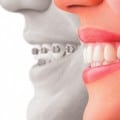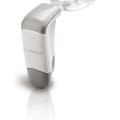My Child’s Permanent Teeth Aren’t Coming in | 6 EPIC FACTS
Last Updated on January 25, 2021 by Gio Greenard
Losing a tooth is a sign that your child is growing and developing properly. A child’s permanent teeth usually appear as quickly as a week or take up to six months to come in. However, if it seems like your child’s tooth is taking an especially long time to appear, and the maximum amount of time has passed, it may be time to pay your pediatric orthodontist a visit. In this post, we’ll show you all about why your child’s permanent teeth aren’t coming in.
Contents
People too ask
- What age do permanent teeth come in?
- Is it normal for permanent teeth to grow behind baby teeth?
- How do permanent teeth grow in?
- What do permanent teeth look like coming in?
- Do teeth in babies stay forever?
Your Child’s Permanent Teeth
Dr. Panucci can help you determine the cause of the delay and assess whether or not orthodontic treatment should be administered. Understanding why your child’s permanent teeth may not be positioning will give a better knowledge of your child’s dental growth.
Unlike a dentist, an orthodontist is specially trained in tooth and jaw alignment. Plus all related issues including gaps, overbites, underbites, and overcrowding. Of course, they are also skilled in treating these conditions using bracing, retainers, wiring, and other corrective tools.
Spacing
An adult tooth can only come in if there is enough space for it to do so. Because your permanent teeth, especially in the front and back of the jaw, are larger than baby teeth, they naturally require more room. When there isn’t enough surface area in the jaw, adult teeth do not come in.
If your child’s baby teeth are close together with no gaps in the front area, this could be a sign that their permanent teeth will not come in as they are supposed to. Most children lose their permanent teeth between the ages of five and seven. But it really depends on each child’s individual development and the amount of space in their mouth.
Direction
Sometimes permanent teeth will fail to come in for reasons unrelated to space. While most teeth erupt in a vertical position, making them appear straight from the front, not all teeth follow this route. This is especially common with upper teeth, like canines and lower bicuspids. When this occurs the teeth are said to be “off course”, resulting in them erupting in the wrong direction.
Your child’s dental growth is important so your doctor may opt for the removal of a baby tooth. This is an effort to correct the misalignment and prevent other teeth from also growing in the wrong direction. However, if this isn’t enough to fix the problem, the doctor may opt to apply additional treatment to help set the growing teeth on the right path.
Lack of Development
Though rare, it is entirely possible for a permanent tooth to fail to present itself because it simply did not develop. In such instances, baby teeth are unlikely to fall out on their own. If for some reason, they do manage to come loose, there will be nothing with which to replace them. This may cause your child distress or even discomfort when they try to chew or bite into certain kinds of foods. The absence of a child’s permanent teeth development is usually congenital or a condition that is inherited.
It is actually quite common, with about 20 percent of the population missing at least one or more wisdom teeth. As each tooth serves an important purpose in the mouth, when one or more is missing, it can disrupt the overall functionality of the others. Dental implants are the most common recommendation for correcting this problem. Braces may also be used to reposition any teeth that may have moved into the wrong spot to compensate for the missing ones.
Failure to Launch
If there is space and the teeth are present in the jaw, but not yet erupted, your child may have a rare condition known as a primary failure of eruption. Though it sounds serious, it really just means that the adult teeth have failed to erupt on their own. Doctors typically apply a combination of oral surgery and braces in order to “rescue” the teeth. Thus preventing complications with the surrounding ones.
Because the condition often involves more than one tooth, the entire correction process often includes multiple treatments administered over the course of three or more years. Your child’s doctor will formulate a detailed course of treatment to help you and your child better understand what will happen during each step of the process.
Supernumerary Teeth
Sometimes teeth just don’t do what they are supposed to, or in some cases, do too much. Occasionally, the space intended for permanent teeth becomes occupied by additional baby teeth. These extra teeth are known as supernumeraries.
They grow in the arch of your mouth and can quickly cause problems ranging from jaw alignment to chronic jaw pain. They can also prevent a child’s permanent teeth from growing in. When these additional teeth occur, oral surgery and other orthodontic treatments are often used to correct the problem.
Impacted Teeth
If your child lost his tooth too soon, perhaps due to an injury, the permanent teeth in his mouth may not have enough room to properly erupt. A small jaw will also cause this problem. These conditions can result in impacted teeth. Commonly known as teeth that fail to emerge from the gums and instead become trapped in the jaw bone.
In some cases, they may partially erupt. While this problem is actually quite common for molar teeth, which are the last ones to appear, it can occur in other teeth, like the incisors, as well. Children with oral health issues like missing teeth, jaw pain, infected or swollen gums, bad breath, and even consistent headaches, may actually have impacted teeth. An evaluation performed by your doctor will reveal the cause of the symptoms. If impacted teeth are present, surgery and tooth extraction may be used.
Conclusion
Every parent wants their child to be healthy and happy. Understanding all about your child’s permanent teeth will help you identify when it may be time to pay a visit to a specialist. Dr. Panucci and all at Beach Braces have the experience and dedication to give you and your child the best possible service.
- Which tip will you try first???
- Either way, let us know by leaving a comment below right now and continue the conversation. Also, link in Twitter over @DrPattiPanucci
BEACH BRACES ORTHODONTICS
220 N. Aviation Blvd. Suite A
Manhattan Beach, CA 90266
Phone: (310) 379-0006
My Child’s Permanent Teeth Aren’t Coming in | 6 EPIC FACTS

Dr Patti Panucci attended the University of Louisville School of Dentistry for four years, where she graduated with a DMD degree (May 2000) among the Top 10 in her class. Following that, she headed west to Los Angeles to complete her three-year residency at one of the top-ranked orthodontic programs in the country – the University of Southern California.
Along with her certificate in orthodontics, Dr. Panucci earned a master’s degree in craniofacial biology. During those three years, she fell in love with Southern California beach life and decided that this was where her future lay.















Leave a Reply
Want to join the discussion?Feel free to contribute!